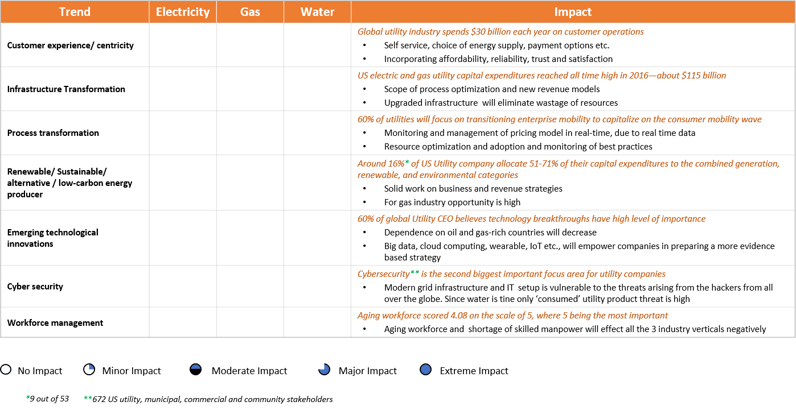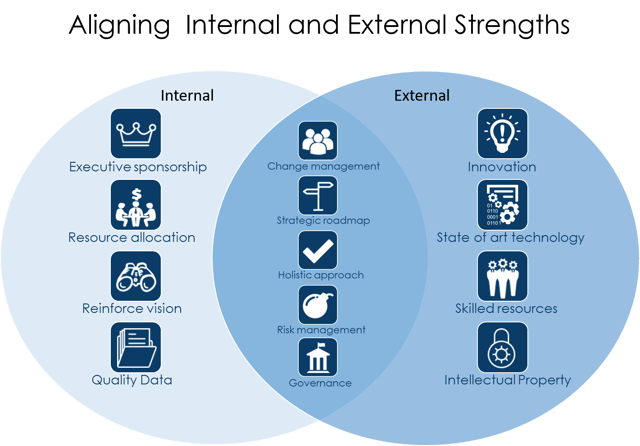
Utilities are experiencing an unprecedented change in the industry. Regulatory changes are driving increased pressure to reduce OpEx while dealing with an aging infrastructure requiring huge capital investments. At the same time the increasing adoption of digital services and capabilities across other industries is driving customer expectations in the utility sector to expect real-time access to information and increased customer services.
This combination of pressures is requiring a magnitude and pace of change that most utilities have never experienced. One of the key challenges is how to integrate digital and IT services to drive down operating cost, provide better predictive analytics and improve the customer experience. This challenge is not a change but a transformation for most utilities impacting both operating and business models.
Utility companies are increasing infrastructure spending to update, maintain, repair and expand power lines, pipes and power plants. According to The Electric Power Research Institute (EPRI) infrastructure investments, in the US alone, are estimated to be between $17 - $24 billion yearly through 2030 to fully deploy smart grid technologies. IT organizations will have to transform not only to adjust to the new technology model but the operational model to become more agile as the rapid technology advancements continue to occur.
This change in culture will require utilities to make the move to agile delivery models and build strong, smart innovative cultures. This will allow utilities to develop the ability to rapidly bring new products to market, and new ways of delivering services and connecting with customers in a sustainable and strategic way. These changes will not be incremental but quantum/breakthrough step-changes so this will be a major culture change for most utilities since historically most utilities are conservative and not fast to adapt to change.
Along with the change in culture to become more adaptive to the market and customer requirements, utilities are having to become more conscious of the ever-increasing threat to their infrastructure grids. As utilities are digitizing their grids and infrastructures, cyber risk will increase. Utilities and their partners are going to be forced to continually adapt and increase their investments in advanced cyber securities solutions.
Electric, gas and water utilities are all facing these challenges and more to a varying degree.
 Source: Avasant Research
Source: Avasant Research
Incremental transformation is not going to be enough for utilities to address challenges they are facing. Without external assistance utilities do not have the time nor the correct resources internally to meet the ever-increasing pressures that are now impacting their business.
The key building blocks to deliver the required transformation are:
- Innovation - Create value using new ideas and technology
- Technology - Drive and enable speedier change in products and services
- Skilled resources - Generate and implement ideas and technology
Critical factors to success are:
- Executive Leaders championing transformation
- Buy-in from stakeholders and users
- Holistic approach
- Well-structured plan with realistic outcomes
- Allocation of required resources, i.e. funds, people, etc.
How can an industry that has typically had difficulty in adapting to rapid changes, both culturally and technologically, address these challenges?
Utilizing external partnerships to accomplish these rapid and ongoing transformations is going to be increasingly critical to success. This will allow utilities to focus on business-critical issues and visions while aligning internal and external strengths.

Over the months and years to come we will experience a continuous rise in strategic partnerships between utilities and their core set of business partners to help drive innovation and transformation to their organizations.
